- Home
- Michael Wolff
Fire and Fury
Fire and Fury Read online
Begin Reading
Table of Contents
About the Author
Copyright Page
Thank you for buying this
Henry Holt and Company ebook.
To receive special offers, bonus content,
and info on new releases and other great reads,
sign up for our newsletters.
Or visit us online at
us.macmillan.com/newslettersignup
For email updates on the author, click here.
The author and publisher have provided this e-book to you for your personal use only. You may not make this e-book publicly available in any way. Copyright infringement is against the law. If you believe the copy of this e-book you are reading infringes on the author’s copyright, please notify the publisher at: us.macmillanusa.com/piracy.
For Victoria and Louise, mother and daughter
AUTHOR’S NOTE
The reason to write this book could not be more obvious. With the inauguration of Donald Trump on January 20, 2017, the United States entered the eye of the most extraordinary political storm since at least Watergate. As the day approached, I set out to tell this story in as contemporaneous a fashion as possible, and to try to see life in the Trump White House through the eyes of the people closest to it.
This was originally conceived as an account of the Trump administration’s first hundred days, that most traditional marker of a presidency. But events barreled on without natural pause for more than two hundred days, the curtain coming down on the first act of Trump’s presidency only with the appointment of retired general John Kelly as the chief of staff in late July and the exit of chief strategist Stephen K. Bannon three weeks later.
The events I’ve described in these pages are based on conversations that took place over a period of eighteen months with the president, with most members of his senior staff—some of whom talked to me dozens of times—and with many people who they in turn spoke to. The first interview occurred well before I could have imagined a Trump White House, much less a book about it, in late May 2016 at Trump’s home in Beverly Hills—the then candidate polishing off a pint of Häagen-Dazs vanilla as he happily and idly opined about a range of topics while his aides, Hope Hicks, Corey Lewandowski, and Jared Kushner, went in and out of the room. Conversations with members of the campaign’s team continued through the Republican Convention in Cleveland, when it was still hardly possible to conceive of Trump’s election. They moved on to Trump Tower with a voluble Steve Bannon—before the election, when he still seemed like an entertaining oddity, and later, after the election, when he seemed like a miracle worker.
Shortly after January 20, I took up something like a semipermanent seat on a couch in the West Wing. Since then I have conducted more than two hundred interviews.
While the Trump administration has made hostility to the press a virtual policy, it has also been more open to the media than any White House in recent memory. In the beginning, I sought a level of formal access to this White House, something of a fly-on-the-wall status. The president himself encouraged this idea. But, given the many fiefdoms in the Trump White House that came into open conflict from the first days of the administration, there seemed no one person able to make this happen. Equally, there was no one to say “Go away.” Hence I became more a constant interloper than an invited guest—something quite close to an actual fly on the wall—having accepted no rules nor having made any promises about what I might or might not write.
Many of the accounts of what has happened in the Trump White House are in conflict with one another; many, in Trumpian fashion, are baldly untrue. Those conflicts, and that looseness with the truth, if not with reality itself, are an elemental thread of the book. Sometimes I have let the players offer their versions, in turn allowing the reader to judge them. In other instances I have, through a consistency in accounts and through sources I have come to trust, settled on a version of events I believe to be true.
Some of my sources spoke to me on so-called deep background, a convention of contemporary political books that allows for a disembodied description of events provided by an unnamed witness to them. I have also relied on off-the-record interviews, allowing a source to provide a direct quote with the understanding that it was not for attribution. Other sources spoke to me with the understanding that the material in the interviews would not become public until the book came out. Finally, some sources spoke forthrightly on the record.
At the same time, it is worth noting some of the journalistic conundrums that I faced when dealing with the Trump administration, many of them the result of the White House’s absence of official procedures and the lack of experience of its principals. These challenges have included dealing with off-the-record or deep-background material that was later casually put on the record; sources who provided accounts in confidence and subsequently shared them widely, as though liberated by their first utterances; a frequent inattention to setting any parameters on the use of a conversation; a source’s views being so well known and widely shared that it would be risible not to credit them; and the almost samizdat sharing, or gobsmacked retelling, of otherwise private and deep-background conversations. And everywhere in this story is the president’s own constant, tireless, and uncontrolled voice, public and private, shared by others on a daily basis, sometimes virtually as he utters it.
For whatever reason, almost everyone I contacted—senior members of the White House staff as well as dedicated observers of it—shared large amounts of time with me and went to great effort to help shed light on the unique nature of life inside the Trump White House. In the end, what I witnessed, and what this book is about, is a group of people who have struggled, each in their own way, to come to terms with the meaning of working for Donald Trump.
I owe them an enormous debt.
PROLOGUE: AILES AND BANNON
The evening began at six-thirty, but Steve Bannon, suddenly among the world’s most powerful men and now less and less mindful of time constraints, was late.
Bannon had promised to come to this small dinner arranged by mutual friends in a Greenwich Village town house to see Roger Ailes, the former head of Fox News and the most significant figure in right-wing media and Bannon’s sometime mentor. The next day, January 4, 2017—little more than two weeks before the inauguration of his friend Donald Trump as the forty-fifth president—Ailes would be heading to Palm Beach, into a forced, but he hoped temporary, retirement.
Snow was threatening, and for a while the dinner appeared doubtful. The seventy-six-year-old Ailes, with a long history of leg and hip problems, was barely walking, and, coming in to Manhattan with his wife Beth from their upstate home on the Hudson, was wary of slippery streets. But Ailes was eager to see Bannon. Bannon’s aide, Alexandra Preate, kept texting steady updates on Bannon’s progress extracting himself from Trump Tower.
As the small group waited for Bannon, it was Ailes’s evening. Quite as dumbfounded by his old friend Donald Trump’s victory as most everyone else, Ailes provided the gathering with something of a mini-seminar on the randomness and absurdities of politics. Before launching Fox News in 1996, Ailes had been, for thirty years, among the leading political operatives in the Republican Party. As surprised as he was by this election, he could yet make a case for a straight line from Nixon to Trump. He just wasn’t sure, he said, that Trump himself, at various times a Republican, Independent, and Democrat, could make the case. Still, he thought he knew Trump as well as anyone did and was eager to offer his help. He was also eager to get back into the right-wing media game, and he energetically described some of the possibilities for coming up with the billion or so dollars he thought he would need for a new cable network.
Both men, Ailes and Bannon, fancied themselv
es particular students of history, both autodidacts partial to universal field theories. They saw this in a charismatic sense—they had a personal relationship with history, as well as with Donald Trump.
Now, however reluctantly, Ailes understood that, at least for the moment, he was passing the right-wing torch to Bannon. It was a torch that burned bright with ironies. Ailes’s Fox News, with its $1.5 billion in annual profits, had dominated Republican politics for two decades. Now Bannon’s Breitbart News, with its mere $1.5 million in annual profits, was claiming that role. For thirty years, Ailes—until recently the single most powerful person in conservative politics—had humored and tolerated Donald Trump, but in the end Bannon and Breitbart had elected him.
Six months before, when a Trump victory still seemed out of the realm of the possible, Ailes, accused of sexual harassment, was cashiered from Fox News in a move engineered by the liberal sons of conservative eighty-five-year-old Rupert Murdoch, the controlling shareholder of Fox News and the most powerful media owner of the age. Ailes’s downfall was cause for much liberal celebration: the greatest conservative bugbear in modern politics had been felled by the new social norm. Then Trump, hardly three months later, accused of vastly more louche and abusive behavior, was elected president.
* * *
Ailes enjoyed many things about Trump: his salesmanship, his showmanship, his gossip. He admired Trump’s sixth sense for the public marketplace—or at least the relentlessness and indefatigability of his ceaseless attempts to win it over. He liked Trump’s game. He liked Trump’s impact and his shamelessness. “He just keeps going,” Ailes had marveled to a friend after the first debate with Hillary Clinton. “You hit Donald along the head, and he keeps going. He doesn’t even know he’s been hit.”
But Ailes was convinced that Trump had no political beliefs or backbone. The fact that Trump had become the ultimate avatar of Fox’s angry common man was another sign that we were living in an upside-down world. The joke was on somebody—and Ailes thought it might be on him.
Still, Ailes had been observing politicians for decades, and in his long career he had witnessed just about every type and style and oddity and confection and cravenness and mania. Operatives like himself—and now, like Bannon—worked with all kinds. It was the ultimate symbiotic and codependent relationship. Politicians were front men in a complex organizational effort. Operatives knew the game, and so did most candidates and officeholders. But Ailes was pretty sure Trump did not. Trump was undisciplined—he had no capacity for any game plan. He could not be a part of any organization, nor was he likely to subscribe to any program or principle. In Ailes’s view, he was “a rebel without a cause.” He was simply “Donald”—as though nothing more need be said.
In early August, less than a month after Ailes had been ousted from Fox News, Trump asked his old friend to take over the management of his calamitous campaign. Ailes, knowing Trump’s disinclination to take advice, or even listen to it, turned him down. This was the job Bannon a week later.
After Trump’s victory, Ailes seemed to balance regret that he had not seized the chance to run his friend’s campaign with incredulity that Trump’s offer had turned out to be the ultimate opportunity. Trump’s rise to power, Ailes understood, was the improbable triumph of many things that Ailes and Fox News represented. After all, Ailes was perhaps the person most responsible for unleashing the angry-man currents of Trump’s victory: he had invented the right-wing media that delighted in the Trump character.
Ailes, who was a member of the close circle of friends and advisers Trump frequently called, found himself hoping he would get more time with the new president once he and Beth moved to Palm Beach; he knew Trump planned to make regular trips to Mar-a-Lago, down the road from Ailes’s new home. Still, though Ailes was well aware that in politics, winning changes everything—the winner is the winner—he couldn’t quite get his head around the improbable and bizarre fact that his friend Donald Trump was now president of the United States.
* * *
At nine-thirty, three hours late, a good part of the dinner already eaten, Bannon finally arrived. Wearing a disheveled blazer, his signature pairing of two shirts, and military fatigues, the unshaven, overweight sixty-three-year-old joined the other guests at the table and immediately took control of the conversation. Pushing a proffered glass of wine away—“I don’t drink”—he dived into a live commentary, an urgent download of information about the world he was about to take over.
“We’re going to flood the zone so we have every cabinet member for the next seven days through their confirmation hearings,” he said of the business-and-military 1950s-type cabinet choices. “Tillerson is two days, Session is two days, Mattis is two days.…”
Bannon veered from “Mad Dog” Mattis—the retired four-star general whom Trump had nominated as secretary of defense—to a long riff on torture, the surprising liberalism of generals, and the stupidity of the civilian-military bureaucracy. Then it was on to the looming appointment of Michael Flynn—a favorite Trump general who’d been the opening act at many Trump rallies—as the National Security Advisor.
“He’s fine. He’s not Jim Mattis and he’s not John Kelly … but he’s fine. He just needs the right staff around him.” Still, Bannon averred: “When you take out all the never-Trump guys who signed all those letters and all the neocons who got us in all these wars … it’s not a deep bench.”
Bannon said he’d tried to push John Bolton, the famously hawkish diplomat, for the job as National Security Advisor. Bolton was an Ailes favorite, too.
“He’s a bomb thrower,” said Ailes. “And a strange little fucker. But you need him. Who else is good on Israel? Flynn is a little nutty on Iran. Tillerson”—the secretary of state designate—“just knows oil.”
“Bolton’s mustache is a problem,” snorted Bannon. “Trump doesn’t think he looks the part. You know Bolton is an acquired taste.”
“Well, he got in trouble because he got in a fight in a hotel one night and chased some woman.”
“If I told Trump that, he might have the job.”
* * *
Bannon was curiously able to embrace Trump while at the same time suggesting he did not take him entirely seriously. He had first met Trump, the on-again off-again presidential candidate, in 2010; at a meeting in Trump Tower, Bannon had proposed to Trump that he spend half a million dollars backing Tea Party–style candidates as a way to further his presidential ambitions. Bannon left the meeting figuring that Trump would never cough up that kind of dough. He just wasn’t a serious player. Between that first encounter and mid-August 2016, when he took over the Trump campaign, Bannon, beyond a few interviews he had done with Trump for his Breitbart radio show, was pretty sure he hadn’t spent more than ten minutes in one-on-one conversation with Trump.
But now Bannon’s Zeitgeist moment had arrived. Everywhere there was a sudden sense of global self-doubt. Brexit in the UK, waves of immigrants arriving on Europe’s angry shores, the disenfranchisement of the workingman, the specter of more financial meltdown, Bernie Sanders and his liberal revanchism—everywhere was backlash. Even the most dedicated exponents of globalism were hesitating. Bannon believed that great numbers of people were suddenly receptive to a new message: the world needs borders—or the world should return to a time when it had borders. When America was great. Trump had become the platform for that message.
By that January evening, Bannon had been immersed in Donald Trump’s world for almost five months. And though he had accumulated a sizable catalogue of Trump’s peculiarities, and cause enough for possible alarm about the unpredictability of his boss and his views, that did not detract from Trump’s extraordinary, charismatic appeal to the right-wing, Tea Party, Internet meme base, and now, in victory, from the opportunity he was giving Steve Bannon.
* * *
“Does he get it?” asked Ailes suddenly, pausing and looking intently at Bannon.
He meant did Trump get it. This seemed to be a question abo
ut the right-wing agenda: Did the playboy billionaire really get the workingman populist cause? But it was possibly a point-blank question about the nature of power itself. Did Trump get where history had put him?
Bannon took a sip of water. “He gets it,” said Bannon, after hesitating for perhaps a beat too long. “Or he gets what he gets.”
With a sideways look, Ailes continued to stare him down, as though waiting for Bannon to show more of his cards.
“Really,” Bannon said. “He’s on the program. It’s his program.” Pivoting from Trump himself, Bannon plunged on with the Trump agenda. “Day one we’re moving the U.S. embassy to Jerusalem. Netanyahu’s all in. Sheldon”—Sheldon Adelson, the casino billionaire, far-right Israel defender, and Trump supporter—“is all in. We know where we’re heading on this.”
“Does Donald know?” asked a skeptical Ailes.
Bannon smiled—as though almost with a wink—and continued:
“Let Jordan take the West Bank, let Egypt take Gaza. Let them deal with it. Or sink trying. The Saudis are on the brink, Egyptians are on the brink, all scared to death of Persia … Yemen, Sinai, Libya … this thing is bad.… That’s why Russia is so key.… Is Russia that bad? They’re bad guys. But the world is full of bad guys.”
Bannon offered all this with something like ebullience—a man remaking the world.
“But it’s good to know the bad guys are the bad guys,” said Ailes, pushing Bannon. “Donald may not know.”
The real enemy, said an on-point Bannon, careful not to defend Trump too much or to dis him at all, was China. China was the first front in a new cold war. And it had all been misunderstood in the Obama years—what we thought we understood we didn’t understand at all. That was the failure of American intelligence. “I think Comey is a third-rate guy. I think Brennan is a second-rate guy,” Bannon said, dismissing the FBI director and the CIA director.

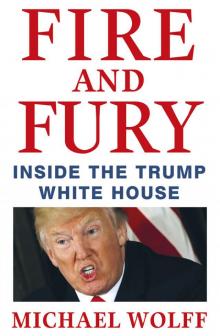 Fire and Fury
Fire and Fury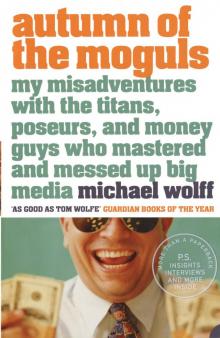 Autumn of the Moguls
Autumn of the Moguls Sefiros Eishi: Chased By War (The Smoke and Mirrors Saga Book 2)
Sefiros Eishi: Chased By War (The Smoke and Mirrors Saga Book 2)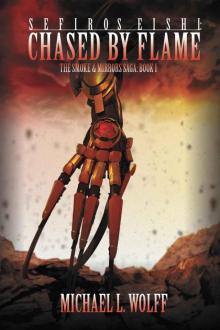 Sefiros Eishi: Chased By Flame
Sefiros Eishi: Chased By Flame Chased By War
Chased By War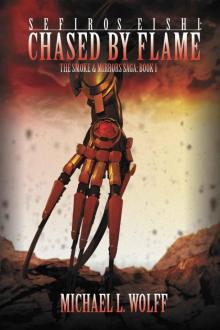 Chased By Flame
Chased By Flame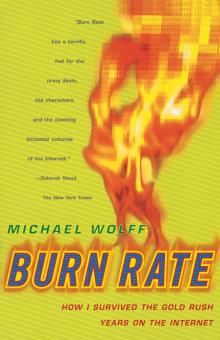 Burn Rate
Burn Rate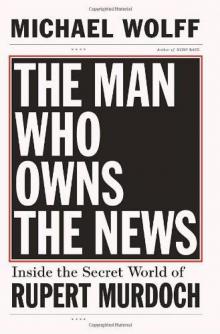 The Man Who Owns the News: Inside the Secret World of Rupert Murdoch
The Man Who Owns the News: Inside the Secret World of Rupert Murdoch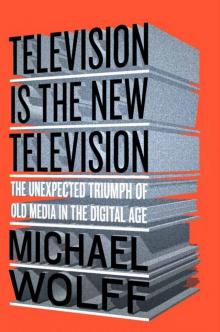 Television Is the New Television
Television Is the New Television